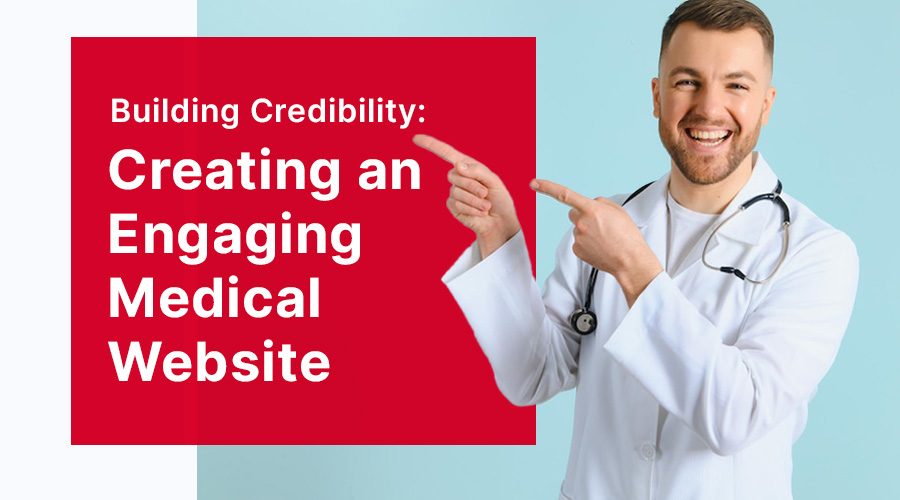Introduction
Imagine being invited to a party. You don’t know the hosts, nor are you familiar with the venue. The invitation itself is a poorly crafted, unreadable mess. Would you go? Probably not, right? Well, think of your medical website as that invitation. If it’s poorly designed, lacks crucial information, or fails to convey trustworthiness, visitors will simply walk away. And they’re likely to never come back. In today’s fast-paced digital world, establishing trust and credibility through your website is not just an option, it’s an absolute must! Let’s dive into how to have engaging medical website today!
Table of Contents
- The Vital Role of Trust in Healthcare
- Designing for Credibility: The Power of First Impressions
- Content: The Backbone of Trust Building
- User Experience: A Key to Engagement
- Transparency and Communication: An Unbreakable Bond
The Vital Role of Trust in Healthcare
You don’t hand over your keys to a stranger, do you? So why would patients hand over their health information to a website they don’t trust? The role of trust in healthcare is paramount. Patients need to feel assured that their personal and sensitive health data will be handled with utmost care. This sense of trust stems from an effective and engaging medical website design.
But what exactly makes a website trustworthy? It’s a mix of different factors. A well-designed, easy-to-navigate interface, quality content, clear communication, and transparency – all these components work together to build trust with your users. Like a well-cooked meal, the right ingredients can create an experience that leaves your users satisfied and eager for more.
Designing for Credibility: The Power of First Impressions
Ever judged a book by its cover? We all have, at some point. This same principle applies to your medical website. A poorly designed website is like walking into a cluttered, messy doctor’s office. It’s off-putting and instantly raises doubts about the quality of care you’ll receive.
Investing in professional, intuitive design is a non-negotiable for healthcare websites. Remember, your website is often the first point of contact for potential patients. It needs to reflect the professionalism, care, and expertise they would expect when stepping into your clinic. Like a well-tailored suit, it should make you look and feel the part.
Content: The Backbone of Trust Building
Quality content is to a website what a heartbeat is to a body – essential and life-giving. But what qualifies as ‘quality’? It’s the kind of content that educates, answers questions, and provides value to the reader. But equally important, it’s content that’s original, up-to-date, and accurate.
Consistently providing high-quality, relevant content not only demonstrates your expertise but also positions you as a trustworthy source of information. Imagine your website as a library: if it’s filled with well-written, reliable, and helpful resources, visitors will return again and again.
User Experience: A Key to Engagement
Have you ever tried finding your way around a new city without a map? Frustrating, isn’t it? The same goes for navigating a complex website. An excellent user experience (UX) can set you apart from the competition, keep visitors engaged, and help convert them into loyal patients.
Make sure your website loads quickly, is mobile-friendly, and provides easy navigation. The process of finding information, booking appointments, or asking questions should be as smooth as a well-choreographed dance. After all, who wants to dance with a partner who steps on their toes?
Transparency and Communication: An Unbreakable Bond
Transparency and communication form the bedrock of trust-building. Patients value healthcare providers who are open, honest, and easy to communicate with. Your website should reflect these values. Providing clear contact details, comprehensive service information, and a dedicated FAQ section can go a long way in fostering trust and improving patient engagement.
Think of your website as an open book. It should lay out everything a visitor needs to know about your practice, leaving no room for unnecessary surprises or doubts. Remember, a patient who trusts you is more likely to recommend you to others. And isn’t that the best kind of marketing?
Conclusion
Building an engaging, trustworthy medical website is a journey, not a sprint. It takes careful planning, ongoing effort, and a genuine understanding of your patients’ needs and expectations. But the results are worth it. At Webnobby, we’re here to help you on this journey, offering professional website design and digital marketing solutions tailored to your needs. Because in the end, your success is our success.


